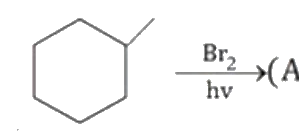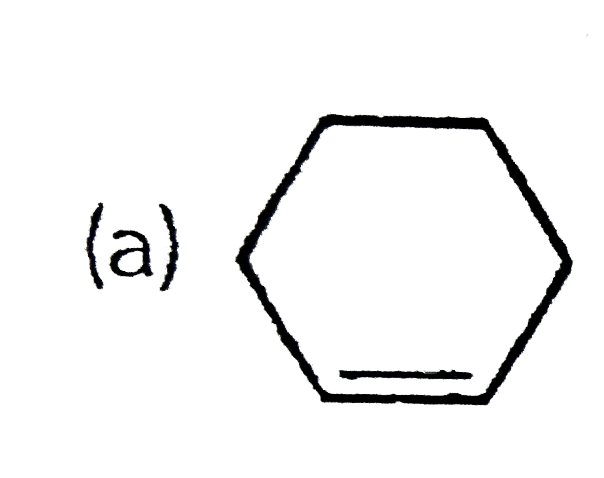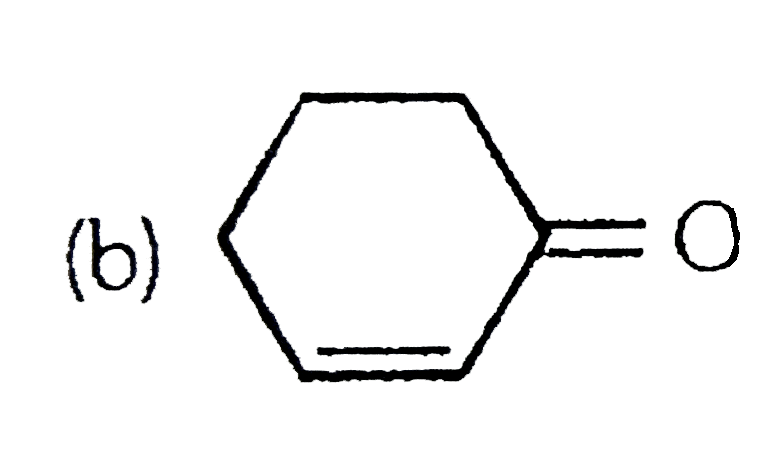C2H5OHPCl5−−→(A)KCN−−→(B)H3O+−−−→(C)NH3−−→(D)heat−−→(E)
Identify the products
The correct Answer is:(A) C2H5CL;
(B) C2H5CN; (C) C2H5COOH; (D) C2H5COONH4;
(E) C2H5CONH2
To solve the given question step by step, we will identify the products formed in each reaction sequentially.
Step 1: Reaction of Ethyl Alcohol with PCl5
- Starting Compound: Ethyl alcohol (C2H5OH)
- Reagent: PCl5
- Reaction: Ethyl alcohol reacts with phosphorus pentachloride (PCl5) to form ethyl chloride (C2H5Cl) and phosphorus oxychloride (POCl3) along with hydrochloric acid (HCl).
- Product A: C2H5Cl (ethyl chloride)
Step 2: Reaction of Product A with KCN
- Starting Compound: C2H5Cl (from Step 1)
- Reagent: KCN
- Reaction: Ethyl chloride reacts with potassium cyanide (KCN) to form propionitrile (C2H5C≡N) and potassium chloride (KCl).
- Product B: C2H5C≡N (propionitrile)
Step 3: Reaction of Product B with H3O+
- Starting Compound: C2H5C≡N (from Step 2)
- Reagent: H3O+ (acidic medium)
- Reaction: Propionitrile undergoes hydrolysis in the presence of hydronium ions to form propionic acid (C2H5COOH) and ammonia (NH3).
- Product C: C2H5COOH (propionic acid)
Step 4: Reaction of Product C with NH3
- Starting Compound: C2H5COOH (from Step 3)
- Reagent: NH3 (ammonia)
- Reaction: Propionic acid reacts with ammonia to form an ammonium salt (C2H5C(=O)O-NH4+) of propionic acid.
- Product D: C2H5C(=O)O-NH4+ (ammonium propionate)
Step 5: Heating Product D
- Starting Compound: C2H5C(=O)O-NH4+ (from Step 4)
- Reaction: Upon heating, the ammonium salt decomposes to form propanamide (C2H5CONH2) and water (H2O).
- Product E: C2H5CONH2 (propanamide)
Summary of Products
- A: C2H5Cl (ethyl chloride)
- B: C2H5C≡N (propionitrile)
- C: C2H5COOH (propionic acid)
- D: C2H5C(=O)O-NH4+ (ammonium propionate)
- E: C2H5CONH2 (propanamide)
- Starting Compound: Ethyl alcohol (C2H5OH)
- Reagent: PCl5
- Reaction: Ethyl alcohol reacts with phosphorus pentachloride (PCl5) to form ethyl chloride (C2H5Cl) and phosphorus oxychloride (POCl3) along with hydrochloric acid (HCl).
- Product A: C2H5Cl (ethyl chloride)
- Starting Compound: C2H5Cl (from Step 1)
- Reagent: KCN
- Reaction: Ethyl chloride reacts with potassium cyanide (KCN) to form propionitrile (C2H5C≡N) and potassium chloride (KCl).
- Product B: C2H5C≡N (propionitrile)
- Starting Compound: C2H5C≡N (from Step 2)
- Reagent: H3O+ (acidic medium)
- Reaction: Propionitrile undergoes hydrolysis in the presence of hydronium ions to form propionic acid (C2H5COOH) and ammonia (NH3).
- Product C: C2H5COOH (propionic acid)
- Starting Compound: C2H5COOH (from Step 3)
- Reagent: NH3 (ammonia)
- Reaction: Propionic acid reacts with ammonia to form an ammonium salt (C2H5C(=O)O-NH4+) of propionic acid.
- Product D: C2H5C(=O)O-NH4+ (ammonium propionate)
- Starting Compound: C2H5C(=O)O-NH4+ (from Step 4)
- Reaction: Upon heating, the ammonium salt decomposes to form propanamide (C2H5CONH2) and water (H2O).
- Product E: C2H5CONH2 (propanamide)
- A: C2H5Cl (ethyl chloride)
- B: C2H5C≡N (propionitrile)
- C: C2H5COOH (propionic acid)
- D: C2H5C(=O)O-NH4+ (ammonium propionate)
- E: C2H5CONH2 (propanamide)
Topper's Solved these Questions
- ALKENE, ALKANE & ALKYNE Book:ALLENChapter:ALKENE, ALKANE & ALKYNE Exercise:EXERCISE-4[B]
Explore 47 Videos
- ALKENE, ALKANE & ALKYNE Book:ALLENChapter:ALKENE, ALKANE & ALKYNE Exercise:EXERCISE-5
Explore 58 Videos
- ALKENE, ALKANE & ALKYNE Book:ALLENChapter:ALKENE, ALKANE & ALKYNE Exercise:EXERCISE-5(B)
Explore 66 Videos
- AIIMS 2019Book:ALLENChapter:AIIMS 2019Exercise:CHEMISTRY
Explore 40 Videos
- ALKYL AND ARYL HALIDEBook:ALLENChapter:ALKYL AND ARYL HALIDEExercise:EXERCISE-05 (B)
Explore 35 Videos
Similar Questions
CH3CH2CH2OHPBr5−−→(A)KOH(Alc)−−−−−−→(B)HBr−−→(C)NH3−−→(D)
Identify the product
View SolutionC2H4Br2−−→XKCN−−→Y,Y is
View Solution Br2−−→hv(A)alc. KOH−−−−→(B)OsO4−−→(C)HlO4−−→(D), Identify 'D'
Br2−−→hv(A)alc. KOH−−−−→(B)OsO4−−→(C)HlO4−−→(D), Identify 'D'
View SolutionIdentify A to G in the following.
(a) Br2,CCl4−−−−−→AKCN−−→BH3O+−−−→C
Br2,CCl4−−−−−→AKCN−−→BH3O+−−−→C
(b) Br2,CCl4−−−−−→DKCN−−→EH3O+−−−→G
Br2,CCl4−−−−−→DKCN−−→EH3O+−−−→G
View SolutionSOCl2−−−→(A)KCN−−→(B)H+−−→(C ), the compound (C ) is

View SolutionThe product D of the reaction CH3ClKCN−−→(A)H2O−−→(B)NH3−−→(C)Δ−−→(D) is
View SolutionCH3CH=CH2NBS−−→AKCN−−→BOH−/Δ−−−−−→CP/Br2−−−→DNH3−−→EΔ−−→F
View SolutionCH3CHONH2−NH2−−−−−−→[A]KOH−−→[B]Br2/hv−−−−→[C]KOH(alc)−−−−−→[D]
Identify D
View SolutionACl2−−→BAgCN−−−→C[H]−−→(CH3)2 NH Reactant [ A ] is :
View SolutionSiCl4H2O−−→(A)Heat−−→(B)Na2CO3−−−−→Heat(C),
The compound (C ) is
View Solution